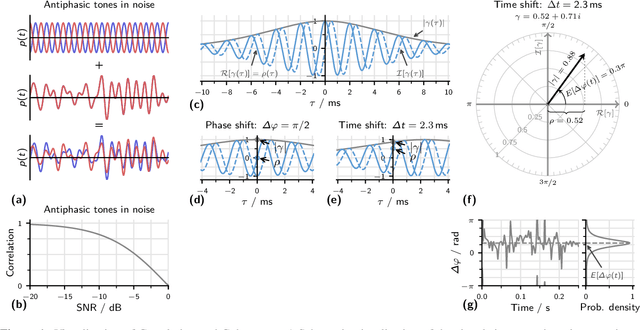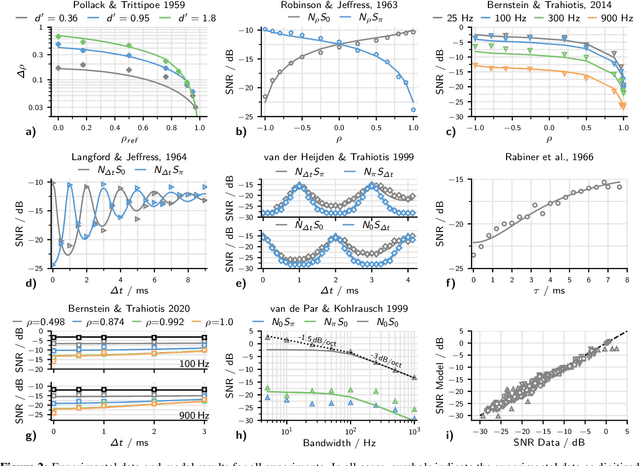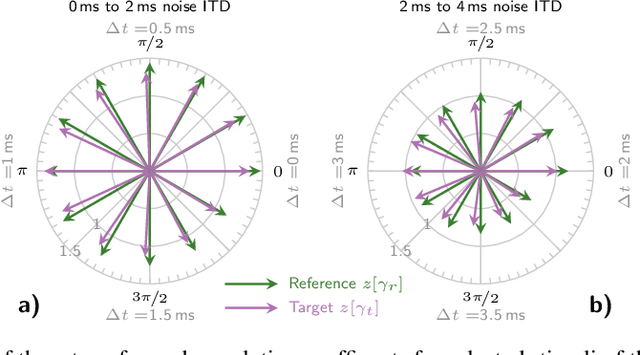The complex-valued correlation coefficient accounts for binaural detection
Paper and Code
Nov 08, 2021



Binaural hearing is one of the principal mechanisms enabling the localization of sound sources in space. In addition, binaural hearing also significantly improves the ability to detect signals in noise. Humans can detect interaurally anti-phasic tones in masking noise at sound levels 15 dB below the detection threshold of the equivalent in-phase tones. Intermediate thresholds result from detecting tones in noise with an interaural time difference (ITD). The ITD dependence has been most accurately accounted for by models using an internal delay-line mechanism. The delay lines, or an equivalent mechanism, however, have not been found in mammals. Alternative coding principles that do not include delay lines can explain many aspects of sound localization but have failed to account for some of the available data on binaural detection. By employing the complex-valued correlation coefficient, we show that a minimum assumption model can explain the outcome of a wide range of binaural detection experiments. The proposed mechanism requires fewer degrees of freedom when compared to delay-line models while arguably improving compatibility with mammalian physiology. The study also shows that the 2-dimensional acoustic feature space of complex correlation coefficients is at the same time a perceptually uniform space for binaural detection.
 Add to Chrome
Add to Chrome Add to Firefox
Add to Firefox Add to Edge
Add to Edge